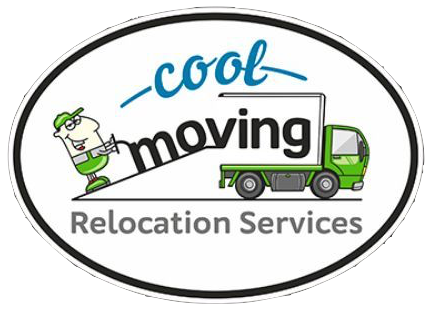Learn how to pack your belongings safely and efficiently with this guide from CoolMoving. Discover tips for protecting fragile items, organizing your packing, and more.
1. Gather the Right Packing Supplies
Before you start packing, make sure you have all the necessary supplies. Using the right materials will protect your belongings during the move.
- Sturdy Boxes: Invest in high-quality moving boxes of various sizes. Avoid using old or damaged boxes that might collapse under weight.
- Packing Tape: Use strong packing tape to securely seal your boxes. Reinforce the bottoms of boxes to prevent them from breaking open.
- Bubble Wrap and Packing Paper: Use bubble wrap and packing paper to cushion fragile items and fill empty spaces in boxes.
- Markers and Labels: Have permanent markers and labels on hand to clearly mark each box with its contents and the room it belongs to.
2. Declutter Before Packing
Moving is the perfect time to declutter. Before you start packing, go through your belongings and decide what you really need to take with you.
- Sort by Category: Go through your items by category (clothing, books, kitchenware, etc.) and set aside anything you no longer need or want.
- Donate or Sell: Consider donating or selling items that are in good condition but no longer serve you. This will reduce the number of items you need to pack and move.
3. Pack Room by Room
To stay organized and make unpacking easier, pack your belongings one room at a time.
- Label Each Box: Clearly label each box with its contents and the room it belongs to. This will help you and the movers know where each box should go in your new home.
- Start with Less Frequently Used Items: Begin by packing items you don’t use daily, such as seasonal clothing, books, and decorations.
4. Protect Fragile Items
Fragile items require extra care to ensure they don’t break during the move. Proper packing techniques can make all the difference.
- Use Bubble Wrap and Packing Paper: Wrap fragile items individually in bubble wrap or packing paper before placing them in boxes. Fill any empty spaces in the box with crumpled paper or bubble wrap to prevent items from shifting.
- Pack Plates Vertically: When packing dishes and plates, place them vertically in the box with padding between each one. This reduces the risk of breakage compared to stacking them flat.
- Label as Fragile: Clearly mark boxes containing fragile items with “Fragile” on all sides, so movers know to handle them with care.
5. Disassemble Large Furniture
Large furniture items should be disassembled to make them easier to move and reduce the risk of damage.
- Keep Hardware in Plastic Bags: As you disassemble furniture, place screws, bolts, and other small hardware in labeled plastic bags. Tape these bags to the corresponding furniture pieces to avoid losing them.
- Wrap in Moving Blankets: Use moving blankets or furniture pads to protect disassembled furniture from scratches and dents during transit.
6. Pack Electronics Carefully
Electronics are often expensive and delicate, requiring special attention when packing.
- Use Original Packaging: If possible, pack electronics in their original boxes with the original packaging materials. This is the best way to ensure they’re protected.
- Label Cables: Before disconnecting any electronics, label all cables and wires so you know how to reconnect them later. Consider taking photos of the setup for reference.
- Wrap Screens: For items like TVs and monitors, wrap the screens in bubble wrap or moving blankets to protect them from scratches and impacts.
7. Pack an Essentials Box
Prepare a box of essentials that you’ll need immediately upon arrival at your new home. This will save you from rummaging through boxes to find important items.
- Include Daily Necessities: Pack items like toiletries, medications, a change of clothes, and basic kitchen supplies (like plates, utensils, and a coffee maker) in your essentials box.
- Keep Important Documents Accessible: Include important documents, such as passports, contracts, and insurance papers, in a folder within your essentials box.
8. Seal and Label Your Boxes
Properly sealing and labeling your boxes is crucial for keeping your items safe and organized during the move.
- Seal Boxes Securely: Use packing tape to seal all seams of the box, especially the bottom. Double tape heavier boxes to prevent them from opening.
- Label Clearly: Write the contents and destination room on the top and sides of each box. This makes it easier to identify boxes during the move and when unpacking.
9. Don’t Overpack Boxes
Overpacking boxes can lead to damage and make them difficult to move. Keep boxes to a manageable weight.
- Distribute Weight Evenly: Place heavier items at the bottom of the box and lighter items on top. Avoid overfilling boxes, which can cause them to become too heavy or difficult to close.
- Use Small Boxes for Heavy Items: For items like books and canned goods, use small boxes to prevent them from becoming too heavy to lift.
10. Plan Your Packing Order
Think about the order in which your items will be loaded and unloaded. Pack items you’ll need first at your new home last, so they’re easily accessible.
- Load Last, Unload First: Items like cleaning supplies, bedding, and kitchen essentials should be packed last, so they’re the first things you can access at your new home.
- Label Priority Boxes: Mark boxes with priority items so you know which ones to unpack first.
Conclusion
Packing your belongings safely and efficiently is key to a successful move. By gathering the right supplies, protecting fragile items, and staying organized, you can minimize the risk of damage and make the transition to your new home smoother. Follow these tips from CoolMoving to ensure your belongings arrive safely and you’re ready to settle into your new space with ease.


Recent Comments